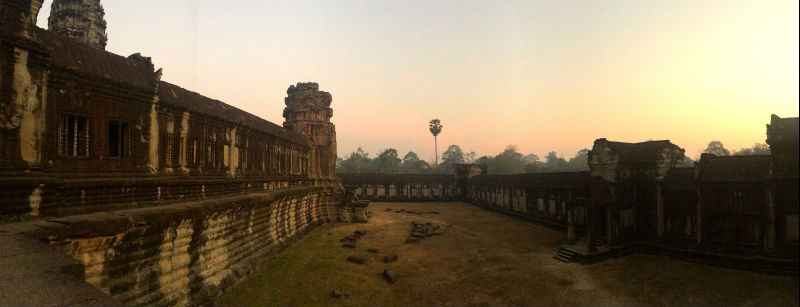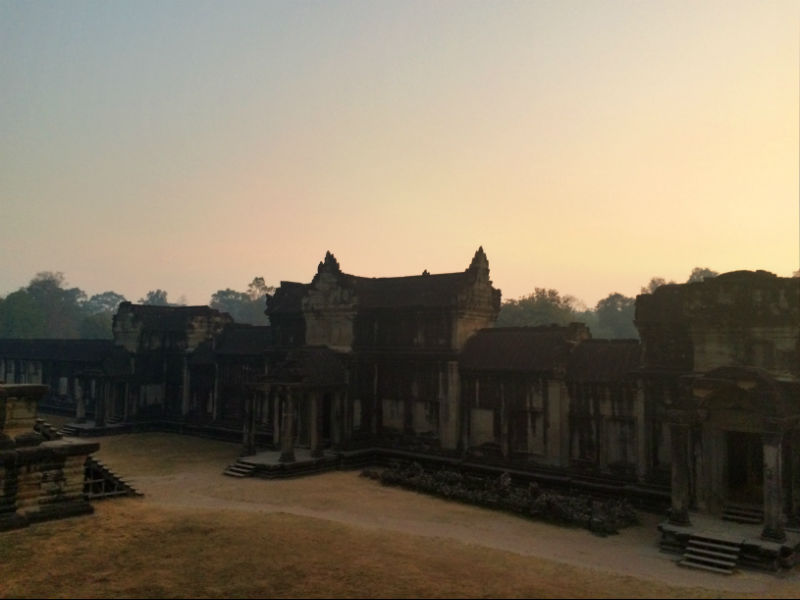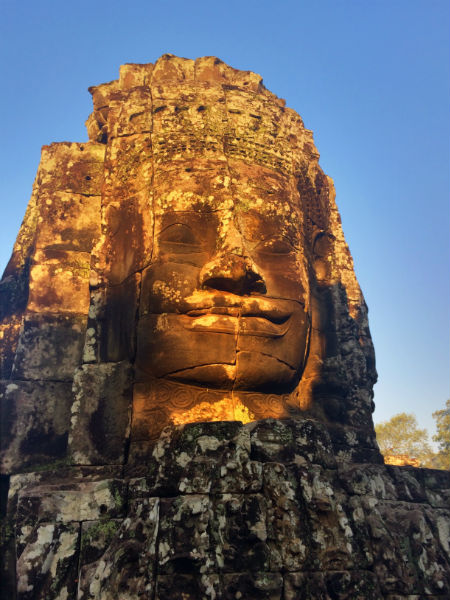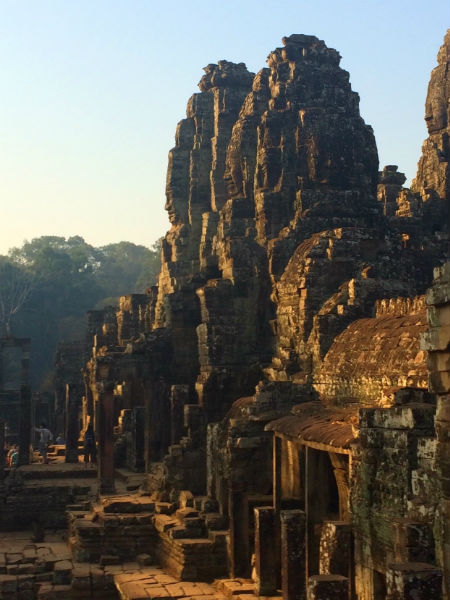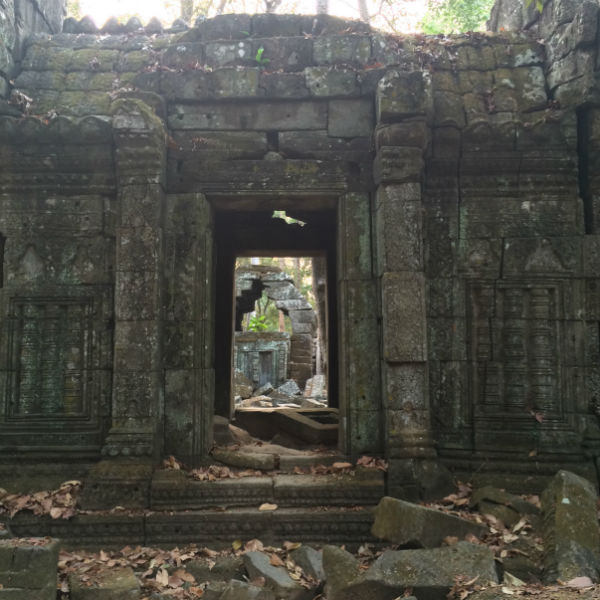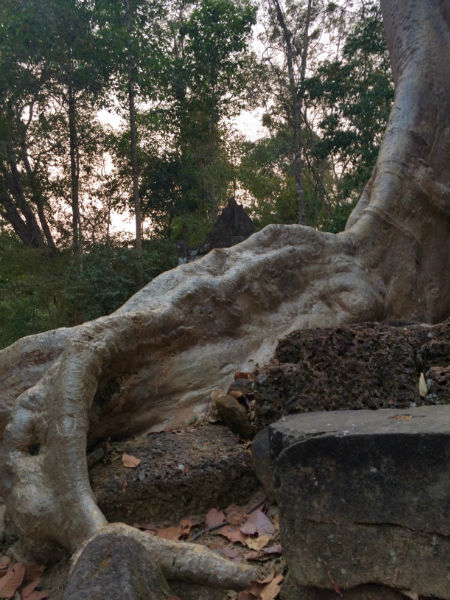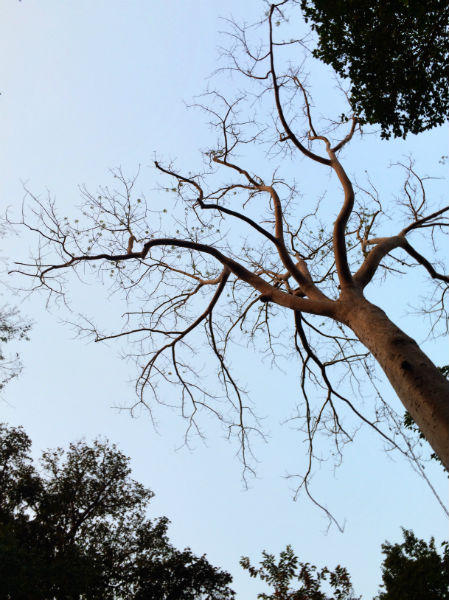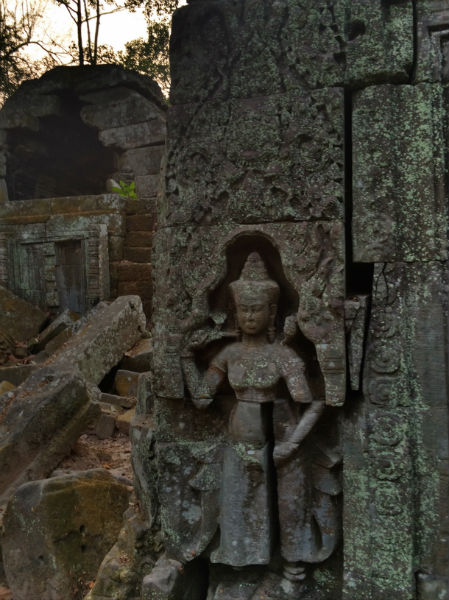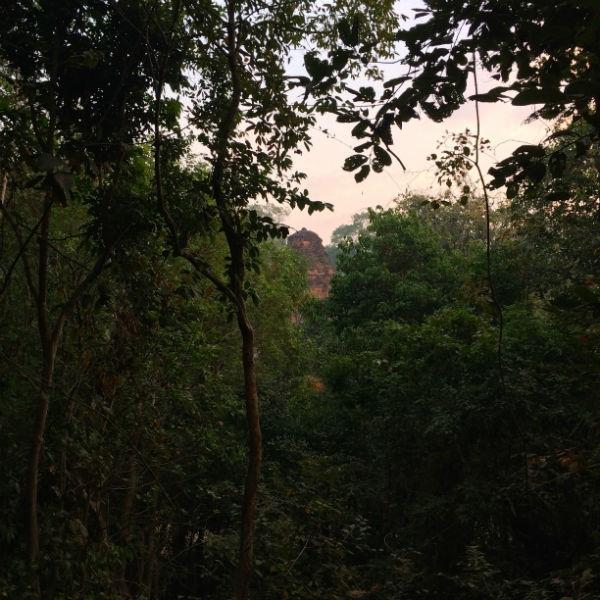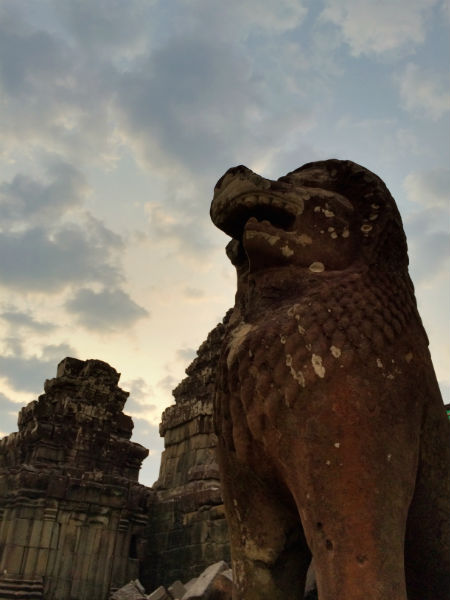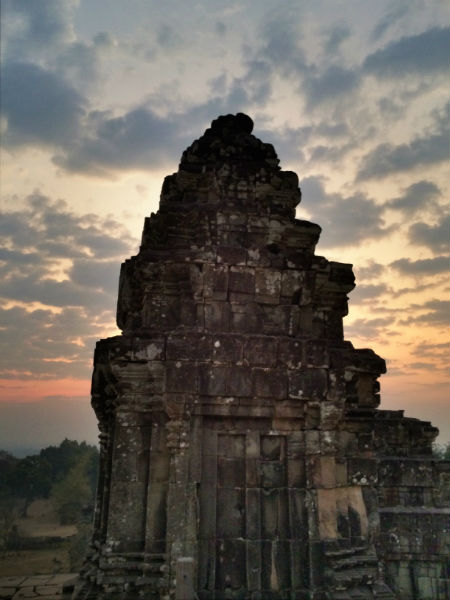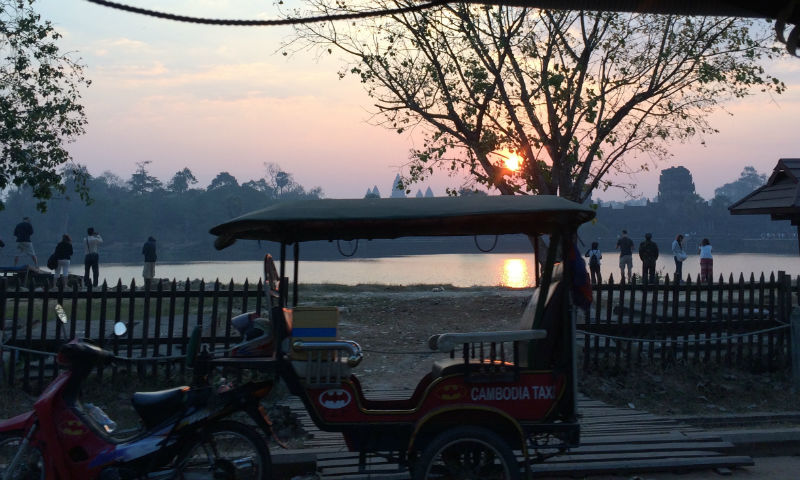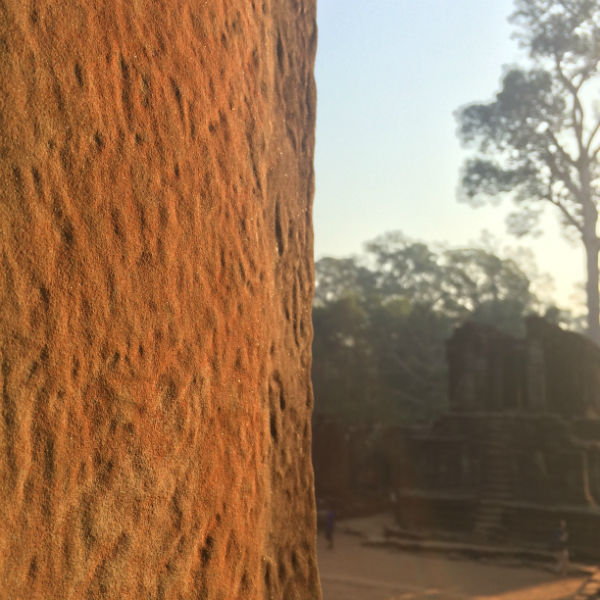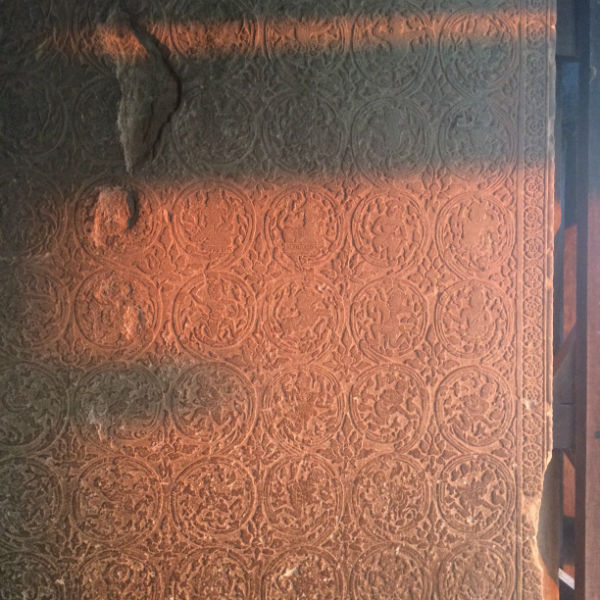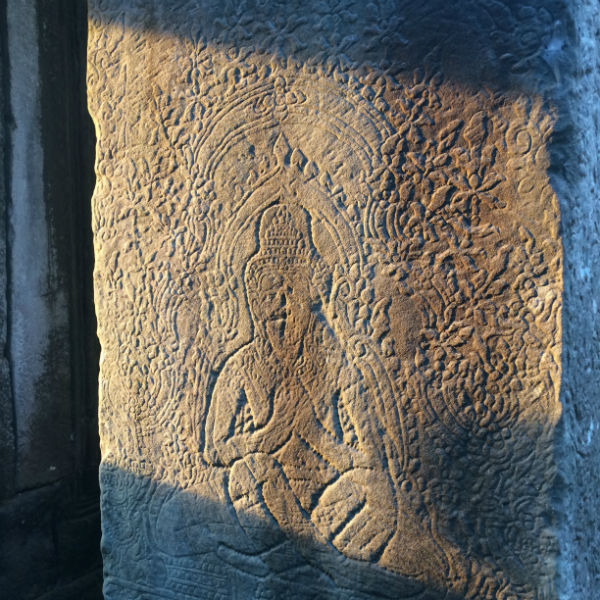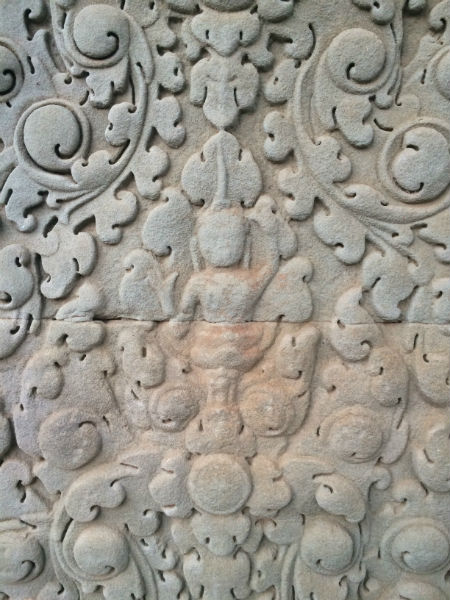As there was a full moon, it seemed appropriate to explore a completely deserted Angkor Wat. We had a bottle of champagne, half a bottle of Grand Marnier, and some of that Cambodian ganja so freely and more-or-less legally available
When visiting Siem Reap, the question is not so much where to go for sightseeing, but how to do it in such a way as not to be permanently surrounded by throngs of tourists. Over 4 million tourists find their way to Siem Reap every year, and they do not come for the riverside view or to go hiking by the lake, they all want to see the sun rising over Angkor Wat, or that one temple where Angelina Jolie played a videogame character endowed with a huge, err, knowledge of ancient artefacts.
So did we.
But just like visiting Ryoan-ji’s famous zen garden on a regular day is a frustrating exercise in futility1Last time I was there, loudspeakers had been mounted on the platform facing the garden, blaring multi-lingual explanations on the true meaning of zen to groups of bored high-schoolers and disinterested foreigners too busy trying to frame as many rocks as possible into their selfie., being surrounded by a noisy sea of selfie-stick-carrying tourists did not seem like the best way to stand in awe and admiration at millenium-old stone palaces.
Sunrise
Fortunately, most tourists do not like to get up at ungodly early hours, which is incidentally the time when sunrises happen. And sunrises are awesome. Not so much for the big ball of orange that magically makes its way up the horizon every single day without fail (although that can be cool too), but because the few hours that follow are bathed in the most sumptuous light of the day: warm hues of pink and orange that draw long shadows on the tiniest stone detail and make an already impressive place take a surreal cinematic appearance. And even when the best camera you own came free with your annual phone plan, you can’t have too much photography-worthy lighting in your life.
Of course, the perspective of a 4am wake-up is only a mild deterrent to the more decided tourist hordes, and our pre-dawn tuk tuk ride ended in the company of a worryingly large number of other sunrise-seekers. By the time we arrived at the entrance to Angkor Wat, large crowds of tired people in neon-clothing were queueing for coffee and waving tiny flashlights around. Despite strong flashbacks of 90s raves in rural Yorkshire, no acid house music could be heard in the background.
Making our way toward the inner temple amidst a compact stream of visitors, within earshot of at least a dozen different guides’ loud blather, I was starting to question the effectiveness of killing a perfectly good night of sleep as a way to escape the crowds, and then something awesome happened. About 100 metres before the temple itself, every single person took a turn left and appeared to congregate by some body of muddy water.
As it turns out, people do not want to be inside Angkor Wat for sunrise, they want the perennial sun-rising-above-temple-with-pond-reflection photo, which admittedly must look a lot cooler in one’s Facebook feed.
Not seeing a single person venturing further, I briefly wondered if the rest of the temple might be closed at this hour, but sure enough, no gates, barriers or any officials whatsoever, stood in the way of our exploration of the entire deserted site.
I will trade a million postcard sunrises any day for a walk through massive stone corridors, glimpsing at bas-relief and carvings in the pre-dawn light, sitting on the east-facing edge of the inner wall, in perfect silence save for the noises of the surrounding forest2… and those bats inhabiting the corner tower ceilings, whose little screeching calls Irina wasn’t very fond of, especially from up close.
By the time the sun was fully up and the trickle of people getting into the precinct was turning into successive waves of tourists by the busloads, we had finished our leisurely exploration and were ready to head further up the road, to Bayon temple.
Between the early morning sunlight and the naturally dominant ocre tones of the dust covering everything, the stones had the unrealistic colour of papier-maché rocks on an Indiana Jones knock-off’s film set. Only better outlining the freakishness of these giant smiling heads popping in and out of mounds of stones rendered nearly shapeless by centuries of vegetal assault. Looking at the temples from some angles, it is literally impossible to escape that cinematic feeling. Damn you Lucas.
Jungle Ruins
Having fulfilled our quota of Lonely Planet Top 10 Spots early on, we turned our attention to some of the smaller, less note-worthy, quieter temples peppering the surrounding jungle: temples like Ta Ney, which traded the archeological value of well-preserved standing walls, for the infinitely more exciting sight of a jumble of massive carved stones intertwined with trees, making those few intact bas-relief or sculptures stand out even more, like the time-travelling miracles that they are.
But most importantly: not being anywhere near the top of the list of places-to-see in Siem Reap, the ruins of Ta Ney were absolutely and completely empty, at sunset on this day3The one other guy reading a book nearby left shortly after we made our own arrival… I hope we did not destroy his own bubble of quiet, with our own – mostly silent – visit.. Standing in the middle of these halfway crumbling doorways adorned with seven-headed snakes, bare-breasted ladies with enigmatic smiles and long powerful tree roots, in the fading sunlight, was made considerably eerier by the reverberating sound of a hundred tropical birds and insects.
More Sunrise
Sunrise from the top of the hill at Phnom Bakheng was another nice moment: not quite as peaceful as the precinct of Angkor Wat4Given its much smaller size, it took only a tour group of obnoxious middle-aged US tourists to spoil it for everyone, but an enjoyable way to start the day with a short hike through the forest rewarded by a view of the entire grounds, including Angkor’s towers slowly emerging from darkness.
On the other hand, everything I have heard about the same hill as a popular place to catch the sunset, sounds extremely close to what the fifth circle of hell would look like, had Dante Alighieri heard of mass tourism. I am not even sure I see the point, given the fact that the main vista to the west is the end of Siem Reap’s airport runway.
Food
In his eminently readable book on Cambodia, Michael Freeman, the lucky bastard quoted at the top of this post who got to travel extensively through the country at a time when no one else did5On account of, you know, a barely extinguished genocide that erased a fourth of the population, a finishing decade of military Vietnamese occupation and plenty of landmines to go around, describes Khmer cuisine as pretty damn similar to Thai cuisine, with a few very-local specialties and recent additions to the repertoire, such as the famous deep-fried tarantulas.
And indeed it is (which is not a bad thing when you love thai curry as I do).
Nonetheless, I really liked amok: Cambodia’s thick, creamy take on the perennial coconut curry soup. I am not yet too sure what my chances are of achieving the same texture6All attempts I made at reducing canned coconut milk have usually merely resulted in an oilier, not creamier, version, but I bloody well will try.
Thanks to Irina’s diligent research work, we went for one delicious dinner at Haven: a charming little restaurant that doubles as a social enterprise helping local orphans acquiring work and life skills through their training program.
Cafés
Having ascribed sightseeing to the much saner early-morning and late-afternoon time slots, meant plenty of daytime hours spent hiding from the sun, lounging in blissfully empty cafés near the town centre. It is hard to put a finger on what it is exactly, but beneath the more recent layer of tacky tourist veneer, a surprising number of places have retained some of that aging French colonial vibe you occasionally spot in less-travelled locales of the former colonies. Regardless of where they drew their influence from, plenty of places to chill with a book and a cup of delicious Cambodian coffee. Special mention to Sister Srey: another member of a local network of social businesses, aiming to improve things for impoverished locals while discouraging feel-good charity tourism and other well-meaning but counter-productive short-term efforts.
Bars
Siem Reap famously has a thriving party life concentrated in its central area. While a perfectly fine place to sample local alcohols (and more) while conversing with fellow backpacking travellers, the drinking establishments lining the aptly named “Pub Street” aren’t exactly where you’d picture Somerset Maugham sipping his drinks. They are still a few levels above Koh Phi Phi7aka West-Staines-upon-Thailand or most other South-East Asian drinking tourist hubs.
Having had more than my life’s share of Asian expats party neighbourhoods and quite knackered from repeated aforementioned sunrise expeditions, I was content with limited drinking excursions and turning in pitifully early on most nights of our short stay there.
Biking
As Siem Reap’s municipality has officially prohibited the rental of motorised scooters to tourists (probably a smart idea), bicycling is the only option for faster-than-foot transportation that does not involve negotiating hourly rates, routes and potential souvenir-purchasing stops with a local. The short distances between city and temples and overall flat terrain made riding a bike around a very enjoyable experience. The ubiquitous reckless driving and questionable road-sharing skills of motorised locals made it a bit less so.
More Time
Siem Reap has now been added to the programme of my next extended world tour: maybe a month-long stopover, equipped with a sturdy BMX and an ample supply of books.
